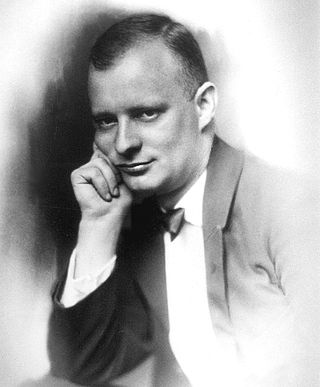
Paul Hindemith was a German composer, music theorist, teacher, violist and conductor. He founded the Amar Quartet in 1921, touring extensively in Europe. As a composer, he became a major advocate of the Neue Sachlichkeit style of music in the 1920s, with compositions such as Kammermusik, including works with viola and viola d'amore as solo instruments in a neo-Bachian spirit. Other notable compositions include his song cycle Das Marienleben (1923), Der Schwanendreher for viola and orchestra (1935), the opera Mathis der Maler (1938), the Symphonic Metamorphosis of Themes by Carl Maria von Weber (1943), and the oratorio When Lilacs Last in the Dooryard Bloom'd, a requiem based on Walt Whitman's poem (1946).

Paul Wittgenstein was an Austrian-American concert pianist notable for commissioning new piano concerti for the left hand alone, following the amputation of his right arm during the First World War. He devised novel techniques, including pedal and hand-movement combinations, that allowed him to play chords previously regarded as impossible for a five-fingered pianist.

Josef Paul Labor was an Austrian pianist, organist, and composer of the late Romantic era. Labor was an influential music teacher. As a friend of some key figures in Vienna, his importance was enhanced.

Leon Fleisher was an American classical pianist, conductor and pedagogue. He was one of the most renowned pianists and pedagogues in the world. Music correspondent Elijah Ho called him "one of the most refined and transcendent musicians the United States has ever produced".

David Geringas is a Lithuanian cellist and conductor who studied under Mstislav Rostropovich. In 1970 he won the gold medal at the International Tchaikovsky Competition. He also plays the baryton, a rare instrument associated with music of Joseph Haydn.

Jenő Takács was a Hungarian composer and pianist.
Daniel Müller-Schott is a German cellist.

Karl Ignaz Weigl was a Jewish Austrian composer and pianist, who later became a naturalized American citizen in 1943.
The Israeli pianist Yaara Tal and her German partner Andreas Groethuysen are a piano duo.

Kammermusik is the title for eight chamber music compositions by Paul Hindemith. He wrote them, each in several movements, during the 1920s. They are grouped in three opus numbers: Op. 24, Op. 36 and Op. 46. Six of these works, Kammermusik Nos. 2–7, are not what is normally considered chamber music – music for a few players with equally important parts such as a wind quintet – but rather concertos for a soloist and chamber orchestra. They are concertos for piano, cello, violin, viola, viola d'amore and organ. The works, for different ensembles, were premiered at different locations and times. The composer was the soloist in the premiere of the viola concertos, while his brother Rudolf Hindemith was the soloist in the premiere of the cello concerto. Kammermusik is reminiscent of Bach's Brandenburg Concertos, also concertos for different solo and orchestra instruments, and in a neo-Bachian spirit of structure, polyphony and stability of motion.
Erich Wolfgang Korngold's Piano Concerto for the Left Hand in C-sharp major, Op. 17, was written on commission from Paul Wittgenstein in 1923, and published in 1926. It was only the second such concerto ever written, after the Concerto in E-flat by Géza Zichy, published in 1895.
Siegfried Rapp was a German pianist who lost his right arm during World War II and then focused on the left-hand repertoire. He is now mainly remembered for being the first to perform Prokofiev's Piano Concerto No. 4 for the Left Hand, Op.53.
Martin Helmchen is a German pianist. He has played with international orchestras and has recorded discs of many classical composers.
A concert piece is a musical composition, in most cases in one movement, intended for performance in a concert. Usually it is written for one or more virtuoso instrumental soloists and orchestral or piano accompaniment.
In music, Op. 29 stands for Opus number 29. Compositions that are assigned this number include:
Christian Seibert is a German classical pianist who recorded the complete piano works by composers such as Krzysztof Meyer. He founded the Kleist Music School in Frankfurt (Oder).

The Violin Sonata No. 2 for piano and violin, in D major, Op. 11, No. 2, is the second surviving violin sonata for the two instruments by Paul Hindemith, composed in 1918. It was published as Sonate in D für Klavier und Violine.
Otto Reinhold was a German composer and music educator
Rolf Kleinert was a German conductor.








